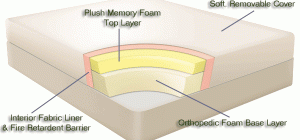 When it comes to choosing a CNC machine, there are innumerable options to decide among. Similar is the case with choosing different tools. However, the latter selection is a bit harder when the purpose behind is to achieve a precise surface finish, durable tool life, or a good cutting speed to slice past any type of material. The tool producers make sure to engineer the tools in a way that they deal with the varied properties and aspects of certain materials. Choosing the appropriate tool for a dedicated task would determine the successful completion of the project.
When it comes to choosing a CNC machine, there are innumerable options to decide among. Similar is the case with choosing different tools. However, the latter selection is a bit harder when the purpose behind is to achieve a precise surface finish, durable tool life, or a good cutting speed to slice past any type of material. The tool producers make sure to engineer the tools in a way that they deal with the varied properties and aspects of certain materials. Choosing the appropriate tool for a dedicated task would determine the successful completion of the project.
So, in this article, we will be discussing the different router bits used in the CNC machinery. Plus, you will get a detailed idea about the usefulness of each of the bit types. Let’s get started.
Different Tooling Materials Based Router Bits
Here are some of the high-edge quality router bits that most pro-grade users often look for in the market:
- Solid Tungsten Carbide Router Bits
Tungsten carbide router bits are developed sturdy tungsten carbide particles that are tightly combined together with metallic Cobalt. Bits made from this composite material are durable and hard and stay relatively sharper for a long period compared to the HSS (High Speed Steel) tools.
- Polycrystalline Diamond Router Bits
Polycrystalline Diamond (PCD) router bits, as the name suggests, are made of diamond particles sintered under extreme pressure and temperature with a metallic binder. This method of producing PCD tools allows the sintered diamond particles to be combined onto a carbide substrate, thereby creating the sturdiest cum most abrasion-resistant CNC router bit ever.
PCD Versus Solid Carbide: How do they differ?
The durability of a PCD tipped router bit’s cutting edge is relatively more than the carbide bits. Based on the type of material to be cut, the PCD bit is well-known for outperforming a carbide tool by 300:1ratio. However, in case of a tighter budget, it is better to settle your expectations on the ratio of 25:1 over the carbide router bits.
If you are using a PCD bit for slicing fiberglass composite panels or fiberglass, then the tool life can be about 25 times lengthier than the traditional carbide tooling bit. Added to that, a PCD tooling saves your time, effort as well as money. It makes sure to deliver consistently smoother and flawless surface finish at every use.
Here are some more tools(CNC router bits) available on the market:
- Carbide Tipped Router Bits
Carbide tipped router bits offer edge durability of carbide combined with a low cost steel base. This type of tooling comes with straight flutes. These are also router bits recommended by Bill Baum who regularly shares his work on The Edge Cutter.
- High Speed Steel (HSS) Router Bits
HSS is made of poured material that is metallurgically and chemically fused together. Firstly, the steel is extracted from raw ore. Then it is liquefied under extreme heat; in this process, a number of elements and minerals are added to strengthen the internal structure of the end product (i.e. the HSS).
Note: The longevity of an HSS is shorter than a carbide tipped router bit.
- Ceramic Router Bits
You can consider ceramic router bit as an alternative to carbide tool in terms of the tool life. The notable consideration with the ceramic router bits is the price of the coating materials. The concept here is similar to that of the PCD router bits.
Geometry and Types of Material
For achieving the required edge quality, it is very important to pick the right geometry(structure). It is the geometry of the router bit that regulates the direction of chip flow. Selection of inaccurate types of tools may chip, burn, or even damage your workpiece, rendering it useless. That is why we have compiled a number of router bits, where each is meant for a typical material only. This will probably help you to decide better about which tool to select for what job and which not to.
- Straight Flute
If your work material involves wood or plastic, then go for a router bit with straight flute design. The tool with one or more cutting edges delivers a clean surface finish. The harder the workpiece, the more should be the cutting edges of the bit. Straight flute prevents the material lifting out of the cut.
- Spiral Flute
Spiral flute based router bit is fit for the projects that include working with aluminum, wood, or plastic material. The up-spiral flute is typically the best choice for the removal of material chips during the operation.
Note: Re-melting of the plastic or aluminium chips indicates the poor cutting quality.
Use single spiral flute tools for faster feed rates in softer materials. The single-flute cutter typically has lots of room for chips, bit the single cutting edge limits either the feed rate or the hardness of the material to be cut. These types of cutters are especially recommended for plastics.
Application of double or triple spiral flutes ensure cleaner finish on a harder workpiece. Double-flute router bit is for pause-free cutting action as the chip load of a double-flute cutter is smaller than the single-flute (for a specified feed).
Upcut spiral is the most coveted spiral flute on the market. It is used in slotting or grooving, for upward chip removal and to get a smoother finish on the down side of the workpiece. These bits facilitate rapid cuts as they feature quick chip evacuation from the material surface.
Note: Upcut spirals are not recommended for using on the softer materials because of the jagged patterns that may consequently appear on the top surface. A router bit with such geometry is used to get a flawless finish but on the bottom side of a material.
Downcut spiral tools are fit for thinner materials and deliver a good top side cutting finish of the cut parts.
Note: Make sure to slow down the cutting speed of the downcut spiral bit. Otherwise, the chips will be pressed back into the workpiece. Chip evacuation with downcut spiral is generally less effective compared to the upcut spiral tools.
- Compression Bit
A compression bit features 2 in 1 facility of using it as an upcut as well as s downcut spiral. It is the combination of both the spirals. A typical compression spiral cutter includes a downcut with single, double or triple flute facility at its tip, ⅓ rd of the cutting length (approximately). The remaining ⅔ rd is the ground for upcut shearing.
A compression bit, being the fusion of both the upcut and downcut geometries, is a win-win tool for any professional woodworker. The lower side of the workpiece is pulled upwards, whereas the upper side of it is pushed downwards, thereby preventing the risks of damaging the lamination of the material surface. The bit leaves a cleaner and sharper edge on either side of the workpiece, if the bit is drilled through the full depth.
A compression bit is an expensive choice compared to the standard bits because of the former having 2 in 1 ability, as discussed above. However, it is yet better to pay some extra bucks than damaging your double limited workpiece using a standard bit.
- Ball Nose Bit
Ball nose router bits feature a spherical tip, typically designed for using in 3D machining operations. By an accurate selection of the tool diameter and an appropriate stepover (the distance between consecutive tool passes), you can achieve a precise and smooth 3D surface on most type of materials. Some ball nose tools come with an added coating that gives them longer life and can be used for cutting more abrasive workpieces.
- Grinding Burr Bit
This type of bit is made of solid carbide. Such tools come with multiple diamond-patterned cutting flutes which generate minute chips for easy evacuation, leaving a smooth surface finish. The grinding burr router bit is name so because of its higher count of cutting edges. This type of bit has high longevity and works well on materials with coarse surface, which is otherwise a deal to be machined by using standard single or double fluted bit.
The cutting flutes at the tip of the router bit male these tools fit for both plunging and profiling. Grinding Burr bit is mostly used for processing carbon fiber, fiberglass, and other synthesized materials.
General Recommendations Regarding Router Bits Selection
- Single Edge Router Bits: For those users whose primary requirements is the speed and edge quality is not of much importance.
- Twin Edge Router Bits: This is for the users who primary consideration is to have a high edge quality.
- Upcut Spiral Router Bits: This is used for slotting, grooving, or when quick chip evacuation is the primary requirement.
- Shear, Spiral, or Straight Router Bits: Applicable on particleboard, MDF(medium density fiber) or plywood, natural woods, composites
- Cutting Length: It is a crucial point when high edge quality is the ultimate demand. Use the minimal allowable cutting length, depending on the thickness of the material. A tool with a longer than required cutting length can cause deflection, vibration, and deliver an inferior finish.
- Cut Diameter and Length: Generally, the cutting length should be 4 times the cutting diameter and not more than that. A bit with a longer cutting length (i.e., more than four times its diameter) is prone to increased risk of breakage. Plus, a tool with a longer cutting length that is longer than required can cause vibration, deflection and an inferior finish.







